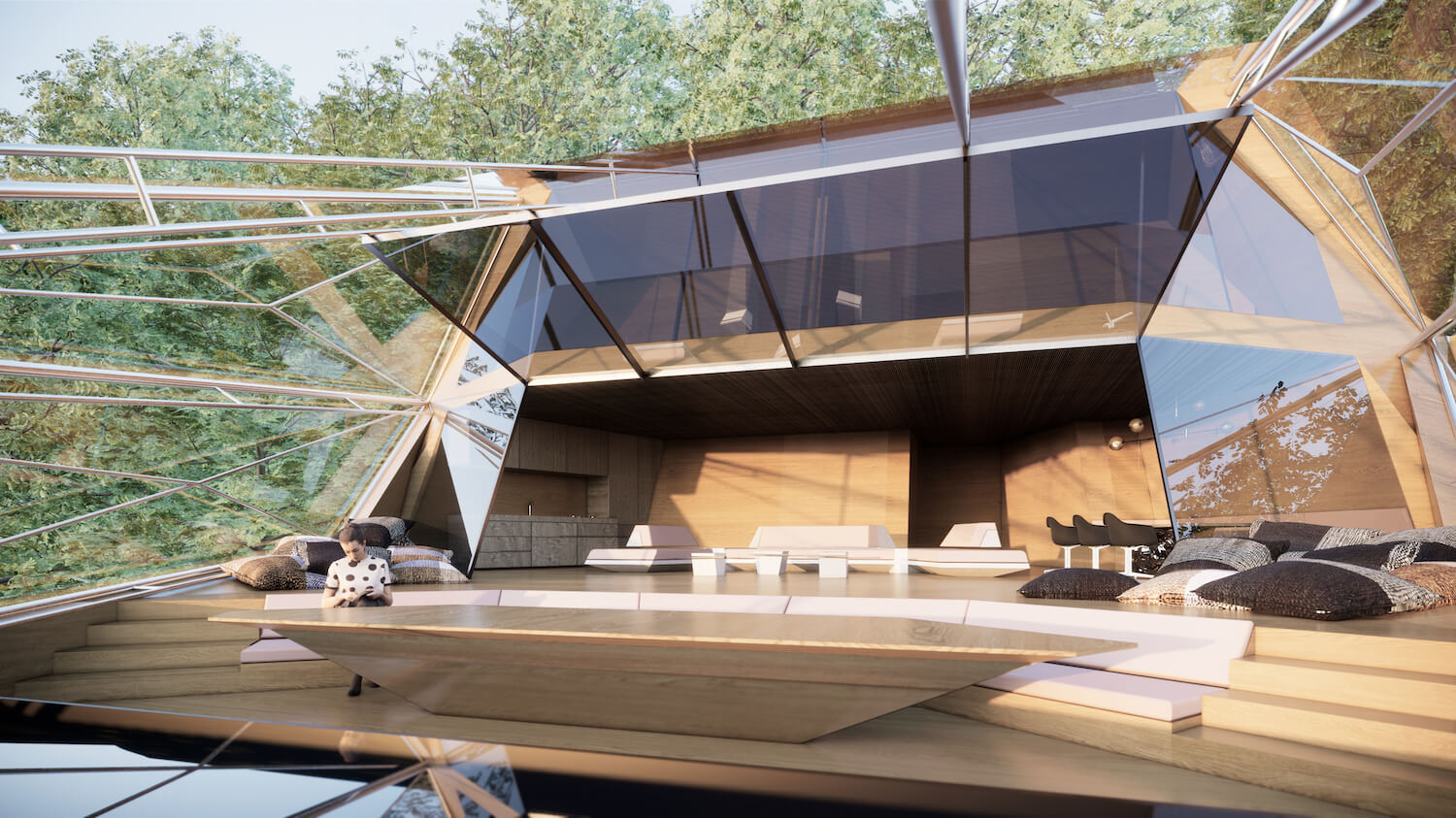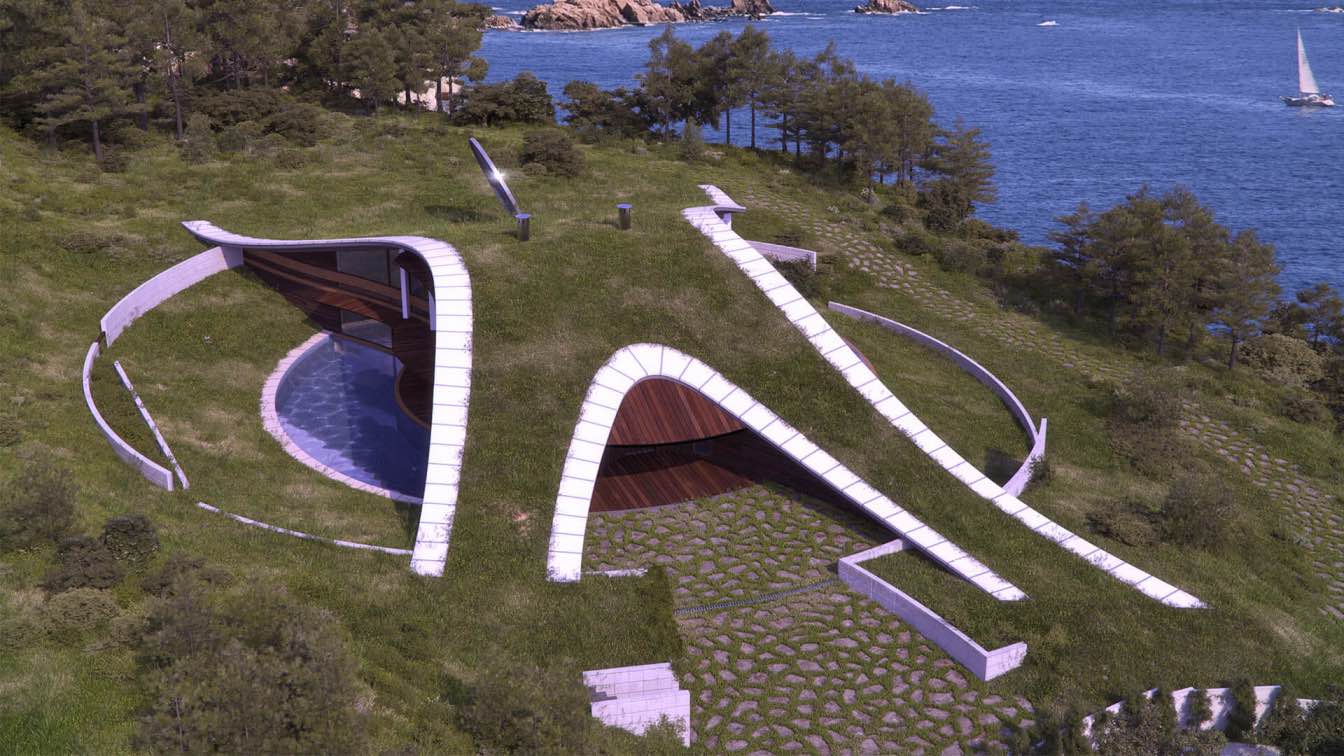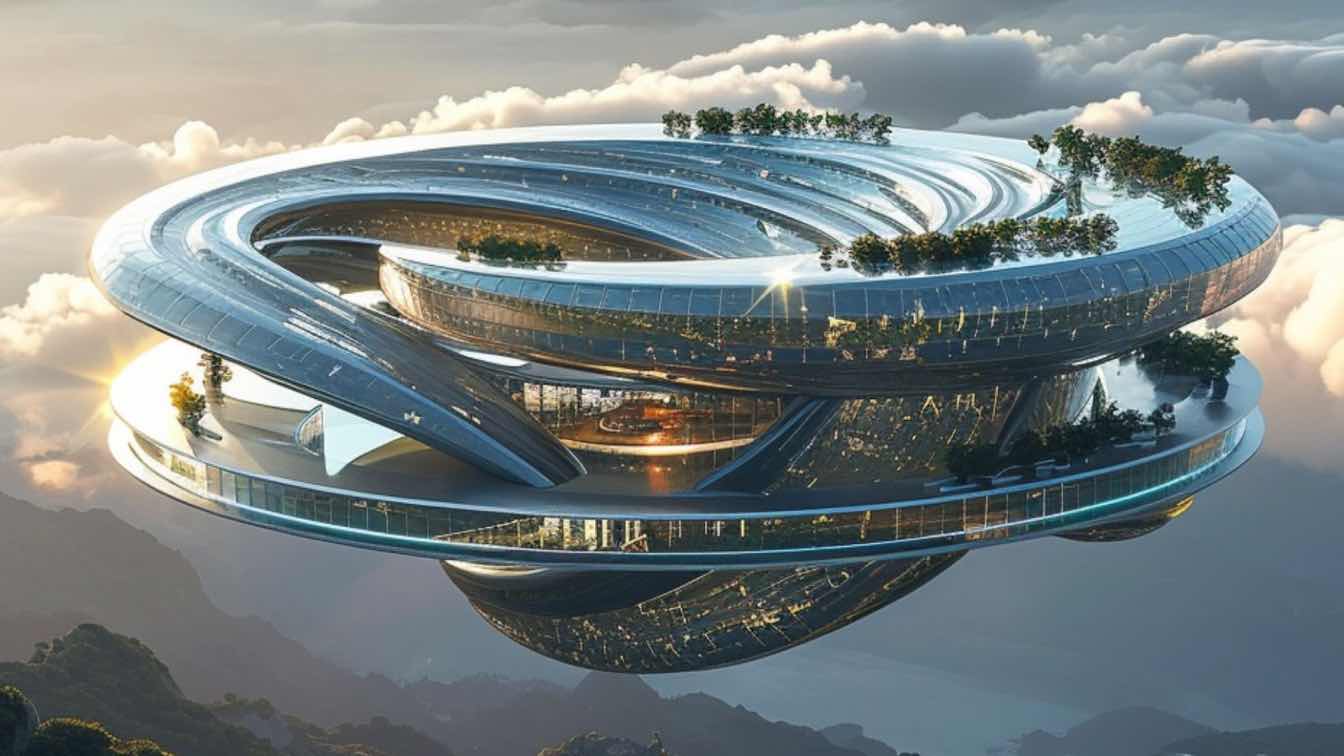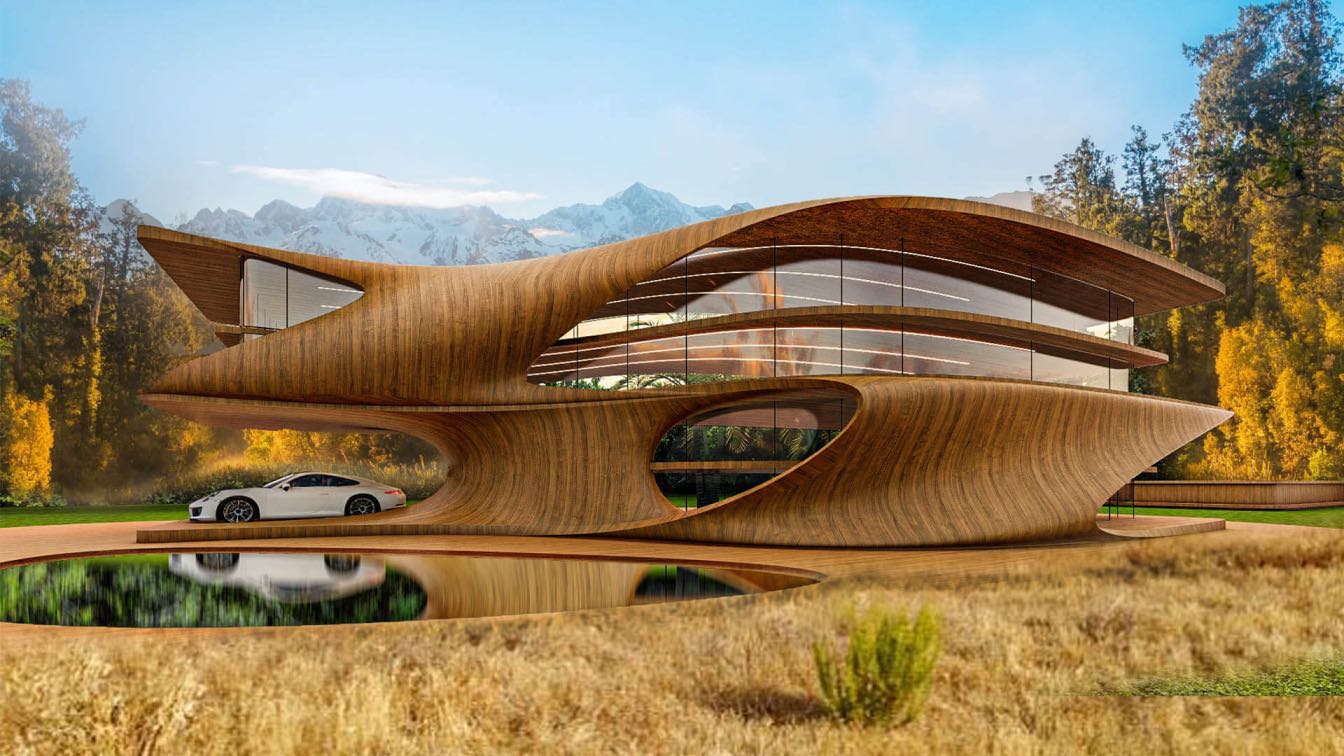Delugan Meissl Associated Architects (DMAA): A detached house is being designed for a site on the Weserhang in the town of Achim. Conceived as an integral part of the surrounding landscape, the house reacts to the local conditions: In order to minimise its impact upon this landscape, the design proposes a floating building volume, which rests upon a single support. This floating architecture reduces the interven- tion of the building on the site to a small insertion in the slope. At the same time, the reduced footprint of the house enables the existing trees to be treated with huge respect.
The house is entered via the lift shaft, which also acts as the load-bearing support. Visitors can also arrive via a filigree bridge that meanders as it floats above the landscape, supported on individual footings built into the slope.

The house consists of two volumes with different temperature characte- ristics. The so-called warm volume contains the living and dining area at ground floor level. An internal circulation enables visitors to reach the upper floor, where two bedrooms with bathroom and ancillary areas are located. These air-conditioned areas open generously onto the winter garden, which – in contrast with the standard solution – is directly adjacent to the living area, which is surrounded by solid walls. The sliding elements in the roof enable the winter garden to react to the weather conditions in the various seasons, by being opened to the outside or protected from rain or snow. In addition to this, the roof structure offers the possibili- ties of both shade and ventilation, thus enabling this external space to be used all-year-round. It contains a sundeck, an outdoor lounge and a body of water that contributes to the regulation of the spatial climate.
Thanks to this second skin, which we describe as a ‘climatic envelope’, the so-called cold volume becomes a form of buffer space that controls the temperature in the entire house. This layer permits a balance to be established between the external climate and the requirements of the inhabitants, in order to ensure that they have a house with a pleasant temperature that they have to neither heat nor cool on a permanent basis.
The circulation core is designed in reinforced concrete, while it is pro- posed to execute the floating part of the house as a steel structure. The winter garden has single glazing, which is replaced by double gla- zing for the air-conditioned living area. It is planned to cover the rest of the façade with metal cladding, which will be protected against bird impact by a printed film.














